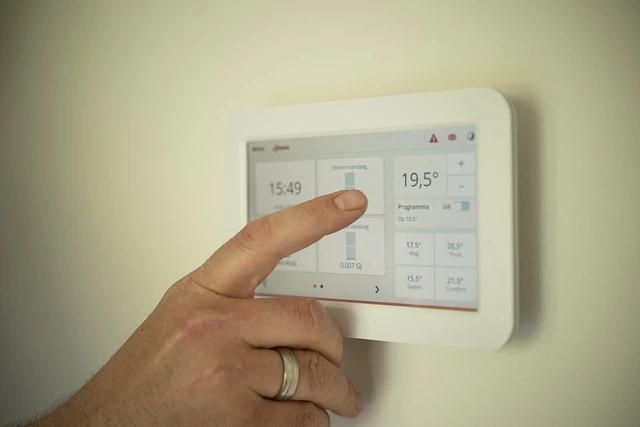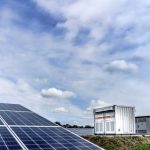Passive solar heating leverages the building’s location, climate, and materials to minimize energy usage. By strategically placing windows and selecting materials that enhance heat absorption and storage, buildings can naturally maintain comfortable temperatures. In the European context, where the EU aims for a climate-neutral economy by 2050, the integration of such sustainable practices is crucial. For instance, the EU’s Energy Performance of Buildings Directive (EPBD) mandates nearly zero-energy standards for new buildings from 2020 onwards, pushing architects and builders to adopt smarter, energy-efficient technologies.
The Role of Thermal Mass and Insulation
The effectiveness of passive solar heating hinges significantly on a building’s thermal mass — materials like concrete or brick that absorb and store heat from the sun during the day and release it slowly as temperatures drop. This natural regulation of temperature reduces the need for mechanical heating and cooling, slashing energy costs and carbon footprints. Insulation is equally important; materials such as expanded polystyrene and spray foam play a pivotal role in preventing heat escape. In Sweden, for example, buildings designed with high thermal mass and robust insulation exceed the standards, demonstrating how local adaptations of EU directives can lead to more energy-efficient living spaces.
Integrating Glazing and Orientation for Maximum Efficiency
The strategic use of glazing — size, type, and placement of windows — is fundamental in passive solar design. South-facing windows in the Northern Hemisphere, for example, receive the most sunlight during the winter months, making them ideal for maximizing solar gain. Advances in glazing technologies such as low-emissivity (low-E) glass and triple-pane windows enhance this effect by trapping solar energy inside. The orientation of the building also plays a crucial role. Buildings designed to face the equator can take full advantage of the sun’s path, significantly boosting their passive solar heating capabilities. Real-life examples can be seen in the award-winning designs recognized by the Solar Decathlon Europe, where student teams construct houses that excel in energy efficiency and solar integration.
Statistical Impact of Passive Solar Heating on Energy Efficiency
The adoption of passive solar heating technologies significantly enhances energy efficiency, as evidenced by numerous studies and real-world applications. Here are some compelling statistics that underline the effectiveness of these systems:
- Reduction in Energy Use: Buildings incorporating passive solar design typically see a reduction in heating energy usage by 25% to 75%, depending on their location and design specifics.
- Cost Savings: According to the European Commission, energy-efficient homes can save homeowners up to 30% on their energy bills, which translates to hundreds of Euros annually.
- Market Growth: The market for passive solar technology in Europe is projected to grow by 5% annually, driven by stringent energy regulations and a growing awareness of sustainable living practices.
- CO2 Emissions Reduction: Implementations of passive solar heating systems have been shown to reduce household CO2 emissions by up to 3 tons annually, contributing significantly to the EU’s climate neutrality goals by 2050.
Enhancing Sustainability with Complementary Technologies
While passive solar heating is effective, it can be further optimized when combined with other renewable energy technologies. Solar photovoltaic (PV) systems, for instance, not only provide clean electricity but can also feed surplus energy back to the grid, making the building an active energy participant. In Germany, the KfW banking group offers financial incentives for buildings that install both passive solar features and active solar technologies, recognizing the compound benefits of integrated renewable energy solutions. Additionally, heat recovery ventilation systems ensure that while buildings remain airtight to maximize energy retention, air quality is not compromised. These systems use the energy from outgoing stale air to warm up fresh incoming air, illustrating a smart blend of comfort and sustainability.
Adapting Passive Solar Design to Various European Climates
The applicability of passive solar heating across different European climates is testament to its versatility. From the sunny Mediterranean regions where shading becomes crucial to prevent overheating, to the colder Nordic countries where maximizing solar gain is vital, passive solar design adapts seamlessly. Each adaptation not only adheres to local building codes but also addresses the specific climatic challenges, proving that passive solar heating is not a one-size-fits-all solution but a flexible toolkit for sustainable building design.
Future Trends and Policy Directions in Passive Solar Heating
Looking forward, the evolution of passive solar heating technologies is likely to accelerate, spurred by increasing environmental concerns and stringent EU regulations. Innovations in materials science, such as phase-changing materials (PCMs) that store and release heat at predetermined temperatures, are set to redefine how buildings manage solar gain. The ongoing refinement of building codes to incorporate more rigorous sustainability benchmarks reflects a growing recognition of the role buildings play in environmental stewardship. As these trends converge with public demand for greener living spaces, passive solar heating will continue to be a key feature in the European architectural landscape, driving towards a more sustainable and energy-efficient future.



